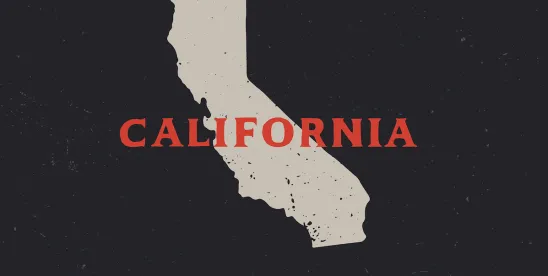County governments throughout the state of California are increasing their efforts to contain the spread of COVID-19 by announcing greater restrictions on residents’ movements and business operations. On March 19, 2020, California became the first state to impose statewide restrictions on its residents’ movements when California Governor Gavin Newsom issued Executive Order N-33-20 (the “Executive Order”), directing all California residents to stay at home unless participating in authorized activities, including work at essential businesses. K&L Gates’ article on the Executive Order can be found here. Several counties in the state announced shelter-in-place or stay-at-home orders before Governor Newsom issued the Executive Order. Recently, several counties issued even stricter stay-at-home orders that impose greater restrictions. This alert discusses (1) San Diego County’s release of a new stay-at-home order that supplements the Executive Order, (2) new Los Angeles County orders and guidance that strengthen its previous stay-at-home order and explain its effects on businesses, and (3) the Bay Area jurisdictions’ replacement of their previous shelter-in-place orders with even stricter orders.
San Diego County
The Health Officer of San Diego County issued an order (the “San Diego Order”) on March 29, 2020, outlining new restrictions on individuals and businesses within the county that must be followed in addition to those outlined in the Executive Order. The restrictions will continue “until further notice.” The San Diego Order is enforceable under California law, and violators can be subject to imprisonment, fines, or both for failure to comply with its provisions.
Most of the San Diego Order’s provisions applicable to businesses reinforce the restrictions set forth in the Executive Order and accompanying guidance. The San Diego Order, for example, incorporates the same list of “Essential Critical Infrastructure Workers” and permits residents who work in one of the listed industries to travel to their places of work. Bars (and other establishments that sell only alcohol), gyms, and fitness centers remain closed under the San Diego Order. Establishments that serve food may not open for “on-site dining,” but they can remain open for takeout, delivery, and drive-through service, subject to social distancing standards.
The San Diego Order also contains several provisions that are stricter than those in the Executive Order. The San Diego Order:
- requires “[a]ll businesses,” including those designated as essential in the Essential Critical Infrastructure Workers list, to “suspend any policy or procedure requiring doctor verification for sick or other leave approval”;
- directs businesses to “make every effort to use telecommuting for its workforce,” as well as institute social distancing and sanitation standards in the workplace;
- includes a “strong recommendation” for individuals who are over the age of 65, have a chronic underlying condition, or have a compromised immune system to self-quarantine; and
- includes a “strong recommendation” for persons exhibiting mild to moderate symptoms of COVID-19 to self-isolate themselves in their place of residence unless seeking medical treatment.
The San Diego Order also restricts certain activities at medical facilities. The San Diego Order requires medical facilities to “take measures to preserve and prioritize resources including delaying non-emergent or elective surgeries or procedures where feasible.” The San Diego Order also bans all “non-essential personnel” from entering any hospital or “long-term care facility.”[1] The San Diego Order defines “non-essential personnel” to mean “employees, contractors, or members of the public who do not perform treatment, maintenance, support, or administrative tasks deemed essential to the healthcare mission of the long-term care facility or hospital.” This blanket ban contains two exemptions:
- First, the San Diego Order explicitly exempts from the definition of “non-essential personnel” first responders; federal, state, or local officials; investigators; and medical personnel carrying out lawful duties.
- Second, the San Diego Order permits a medical facility’s director or designee to grant permission to family and friends to visit residents at the facility, so long as these visits comply with federal, state, and local public guidance on COVID-19.
The San Diego Order also broadens the restrictions on social interactions. The San Diego Order requires all “public or private schools, colleges, and universities” to cancel “classes or other school activities where students gather on the school campus.” Furthermore, although the Executive Order and its accompanying guidance bans only “[p]ublic events and gatherings,” the San Diego Order bans all public and private “gatherings.” The San Diego Order defines a “[g]athering” to mean “any event or convening that brings together 10 or more people in a single room or single space at the same time, such as an auditorium, stadium, arena, theater, church, casino, conference room, meeting hall, cafeteria, or any other indoor or outdoor space.”
The San Diego Order’s ban on public and private gatherings contains several exemptions that allow essential businesses to continue operations, including:
- “[o]perations at airports, public transportation or other spaces where 10 or more persons may be in transit but able to practice social distancing”;
- “[o]perations at businesses included in the designated sectors referenced in [the Essential Critical Infrastructure Workers List], where many people are present but are able to practice social distancing”; and
- operations at businesses that have 10 or more employees in the same room, so long as they are able to practice social distancing.
It is unclear, however, whether the San Diego Order would permit an essential business to remain open if that business is unable to follow social distancing standards (defined as “a six-foot separation from all persons except for household members and medical providers with the appropriate personal protection equipment”). The full text of the San Diego Order can be found here.
Los Angeles County
Since the issuance of the “Safer at Home Order for Control of COVID-19” by Los Angeles County on March 19, 2020, (which K&L Gates outlined in its article here), the Los Angeles County Health Officer issued an updated order on April 10, 2020 with additional guidelines to supplement the county’s efforts to curb the spread of COVID-19 (the “Los Angeles Order”). The Los Angeles Order amends and supersedes the previous order to enhance the restrictions on Los Angeles County residents and businesses and to extend the order’s enforceability from April 19, 2020 until May 15, 2020. In addition to the Los Angeles Order, the Los Angeles County Health Officer has also announced new guidelines for individuals who test positive for COVID-19 and has issued a new resource for businesses to clarify their duties and responsibilities to respond effectively to the COVID-19 crisis.
Under the Los Angeles Order, Essential Businesses are required to implement, by no later than 11:59 p.m. on April 15, 2020, a social distancing protocol. The Los Angeles Order requires the owner, manager, or operator of an Essential Business to post the social distancing protocol either at or near the business’s entrance in a place that is easily viewable by the public and the business’s employees and to give a copy of the protocol to each employee who is working onsite. The Los Angeles Order provides a model Social Distancing Protocol, listed as “Appendix A.” Regardless of whether a business uses the Appendix A model social distancing protocol or creates its own, the social distancing protocol must explain how the business accomplishes the following:
- Limits the number of people who may enter into the facility at any one time to ensure that people in the facility can easily maintain, at all times, a minimum six (6) foot physical distance from others, except as required to complete an Essential Business activity. Persons who are family members or household contacts, may stand or move together, but must be separated from others by a physical distance of at least six (6) feet;
- Identifies where lines may form at a facility, marking six (6) foot increments at a minimum, establishing where individuals should stand to maintain adequate social distancing;
- Provides hand sanitizer, soap and water, or effective disinfectant at or near the entrance of the facility and in other appropriate areas for use by the public and employees, and in locations where there is high frequency employee interaction with members of the public (e.g., cashiers). Restrooms normally open to the public shall remain open to the public;
- Posts a sign in a conspicuous place at all public entries that instructs members of the public not to enter if they are experiencing symptoms of respiratory illness, including fever or cough, and to maintain social distancing from one another;
- Provides for the regular disinfection of high-touch surfaces, and disinfection of all payment portals, pens, and styluses after each use. Essential Businesses are encouraged to also offer touch-less payment mechanisms, if feasible;
- Provides cloth face coverings[2] to employees and contracted workers whose duties require close contact (within six (6) feet for 10 minutes or more) with other employees and/or the public;
- Requires that members of the public who enter the facility wear a face covering during their time in the facility;
- Adheres to communicable disease control recommendations provided by the Los Angeles County Department of Public Health, including guidance for cleaning and disinfecting the site. See guidance posted at www.publichealth.lacounty.gov/media/Coronavirus/.
In addition, the Los Angeles Order revises the lists of businesses that can remain open as Essential Businesses and clarifies activities in which individuals can engage under the order. The Los Angeles Order adds several new businesses to the original order’s list of Essential Businesses, including but not limited to “[m]anufacturers and retailers of fabric or cloth that is made into personal protective equipment, such as, face coverings.” These manufacturers, however, may provide products only through pickup or delivery; they must continue to remain closed to the public. The Los Angeles Order also declares all government employees to be essential workers. For individuals, the Order explicitly states that it does not prohibit any individual or members of a single household or living unit from engaging in outdoor activities, such as jogging, walking, or biking, and includes “outdoor recreation activity” as an “Essential Activity” so long as it is done in compliance with social distancing standards. All “indoor malls shopping centers”[3] and businesses therein, regardless of whether they are essential or non-essential, unless they have an exterior entrance; swap meets and flea markets; indoor and outdoor playgrounds; public beaches; public trails and trailheads; additional specified types of commercial properties;[4] and in-person operations of all non-Essential Businesses remain closed.
Furthermore, on March 25, 2020, the Los Angeles County Health Officer issued an order imposing new isolation protocols for individuals diagnosed with COVID-19 (the “Isolation Protocols”). The Isolation Protocols state that all persons who have been diagnosed with COVID-19 must isolate themselves at home “until: (a) at least 3 days (72 hours) have passed since recovery, defined as resolution of fever without use of fever-reducing medications and improvement of respiratory symptoms (e.g., cough, shortness of breath), AND (b) at least 7 days since symptoms first appeared, whichever is later.” Similarly, individuals who have been exposed to COVID-19 through someone who has tested positive but who have not been confirmed to have contracted COVID-19 must follow the self-quarantine requirements issued in the Isolation Protocols. Individuals who do not follow the Isolation Protocols may be subject to charges of misdemeanor, fine, or both. The full text of the Isolation Protocols can be found here.
The Los Angeles County Health Officer also released a resource for employers and managers whose business operations still remain active as essential businesses. This resource, titled “FAQs for Managers” (the “FAQs”), is a set of “Frequently Asked Questions” that guides employers and managers in Los Angeles County through some common scenarios in the workplace related to COVID-19 and instructs employers on how they should respond to such situations to comply with the various health orders issued by the Los Angeles County Health Officer. The topics addressed in the FAQs include how to respond when an employee, customer, or client arrives at the business exhibiting symptoms of COVID-19 and what to do when an employee may have been exposed to COVID-19 through a customer or a client. The FAQs also provide guidance for employers to maintain business operations when it is possible that all employees may have been exposed to COVID-19. For more information about how businesses can prepare their workspaces and employees to respond effectively to COVID-19, please see the linked resources from the Centers for Disease Control and Prevention and the Occupational Safety and Health Administration.
Bay Area Counties
On March 31, 2020, seven Bay Area jurisdictions strengthened and extended their shelter-in-place orders (the “Bay Area Orders”) until May 3, 2020. The Bay Area Orders contain identical restrictions and are effective in the following jurisdictions: Santa Clara County, the City and County of San Francisco, San Mateo County, Marin County, Alameda County, Contra Costa County, and the City of Berkeley. The Bay Area Orders replace the March 17, 2020 Public Health Orders, which K&L Gates previously outlined in its article here. Although the new Bay Area Orders retain many of the same requirements as the previous orders, the Bay Area Orders include a number of significant revisions that impose additional restrictions on businesses and individuals in the counties, including new restrictions further limiting essential activities and extending social distancing requirements outside the home.
The Bay Area Orders contain several enhanced restrictions on social interactions by:
- placing a cap on the number of people who can attend funerals to 10 or fewer individuals;
- prohibiting people from participating in outdoor activities that involve shared equipment;
- closing areas with shared equipment and facilities like playgrounds, picnic areas, dog parks, golf courses, tennis courts, and pools; and
- stating that counties may adopt further restrictions on use of parks and access to beaches, including possible closure, to prevent crowding.
In addition, the Bay Area Orders further clarify and limit the operations of businesses that qualify under the Bay Area Orders as essential businesses (“Essential Businesses”). The Bay Area Orders include the following changes:
- Businesses that sell food, groceries, or cleaning products combined with non-essential products may continue to operate only if the portion of essential products they sell is a significant part of their business.
- Businesses that include an Essential Business component at their facilities alongside non-essential components must, to the extent feasible, scale down their operations to the Essential Business component only.
- Each Essential Business — including banks, grocery stores, pharmacies, and restaurants open for takeout or delivery — must prepare, post, and implement a written protocol, tailored for that business, to protect customers and employees through designated social distance requirements.
- Childcare facilities must provide care only to children or dependents of individuals who are working for Essential Businesses, providing “Essential Governmental Functions”[5] or performing minimum basic operations for non-Essential Businesses.
- Landscapers and similar service professionals may provide only services that are necessary either (1) to maintain the sanitation, habitability, or operation of residences or businesses; or (2) for safety reasons. The Bay Area Orders prohibit these workers from providing services that are cosmetic or for general upkeep.
The Bay Area Orders also restrict the types of permitted construction projects. Only certain limited types of construction may continue, including:
- projects immediately necessary to the maintenance, operations, or repair of “Essential Infrastructure”[6];
- healthcare projects directly related to addressing the COVID-19 pandemic;
- housing and mixed-use projects that include at least 10 percent affordable housing;
- projects that provide services to vulnerable populations;
- public works projects if specifically designated as an Essential Governmental Function;
- shelters and temporary housing, not including hotels or motels;
- projects required to maintain safety, sanitation, and habitability of residences and commercial buildings; and
- construction necessary to secure an existing construction site that must shut down.
The Bay Area Orders prohibit all other construction. The Bay Area Orders also state the Health Officer may issue guidance requiring construction site-specific health and safety plans.
For more information on what California and other states have done in efforts to combat COVID-19, please see the firm’s COVID-19 resources page.
Notes
[1] The San Diego Order defines a “long-term care facility” as “a facility serving adults that require assistance with activities of daily living, including a skilled nursing facility, and that is licensed by the California Department of Community Care and Licensing, or the California Department of Public Health.”
[2] A cloth face covering is a material that covers the nose and mouth, and the Los Angeles County Department of Public Health published guidance that states that a face covering can be made from a variety of materials, such as cotton, silk, or linen. The Department issued the guidance after new findings showed that wearing a face cover may help prevent the spread of droplets that may be infectious.
[3] The Los Angeles Order defines “Indoor Malls and Shopping Centers” as “[a] building with seven (7) or more ‘sales or retail establishments’ with adjoining indoor space.”
[4] The Los Angeles Order reaffirms the closing of the following businesses: bars and nightclubs that do not serve food; gyms and fitness centers; movie theaters, drive-in theaters, live performance theaters, concert halls, arenas, and stadiums; bowling alleys and arcades; and the portions of wineries, breweries, and tap rooms that provide tastings to the public.
[5] The Bay Area Orders define “Essential Governmental Functions” to mean “all services needed to ensure the continuing operation of the government agencies and provide for the health, safety and welfare of the public.”
[6] The Bay Area Orders define “Essential Infrastructure” to include “airports, utilities (including water, sewer, gas, and electrical), oil refining, roads and highways, public transportation, solid waste facilities (including collection, removal, disposal, and processing facilities), cemeteries, mortuaries, crematoriums, and telecommunications systems (including the provision of essential global, national, and local infrastructure for internet, computing services, business infrastructure, communications, and web-based services).”






 />i
/>i
